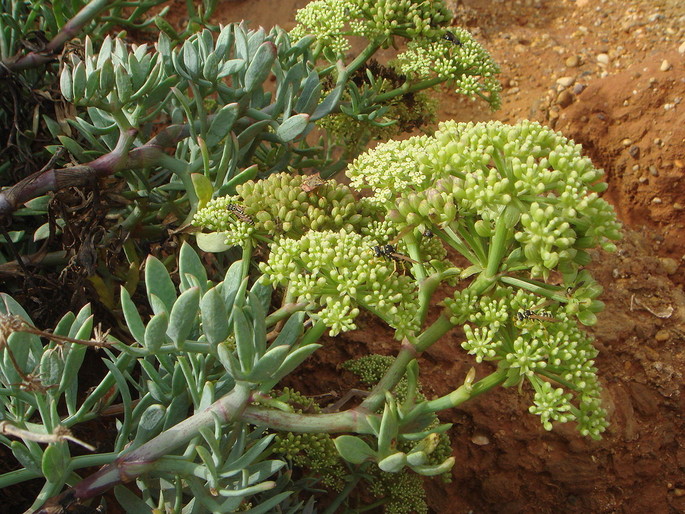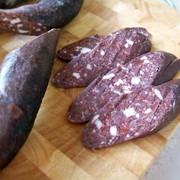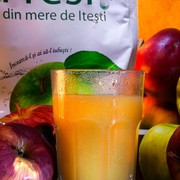Its name derives certainly from its habitat, which is strictly limited to the rocky sea coasts so tied to the life of the fishermen of all time and therefore also to the Saint who was entrusted with the task of founding the Christian Church.
The Crithmum is in fact a plant perfectly equipped to live in a strongly salty environment, prohibitive for the species that have not developed a robust cuticle suitable to defend the internal juices from dehydration, as they are used to make the typical species of deserts.
It is not a strictly exclusive plant of the Ligurian flora, but diffused on the coastal rocks that bathe in the Mediterranean and in the Atlantic, reaching up to the Scottish coasts; on the contrary, it tolerates the soils impregnated with sea salt, in an environment in which the splashes of the agitated sea spread; in that typical landscape of the coastal cliffs that, from its presence, takes the name of Critmeto or Crithmo limonieta.
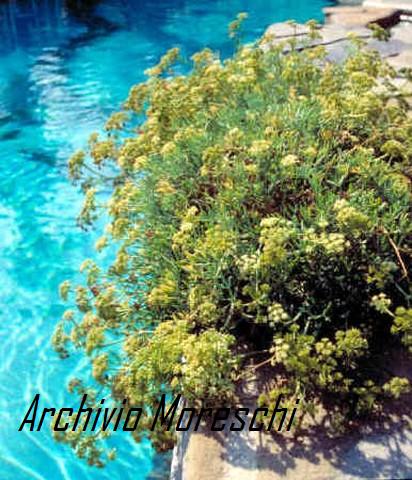
Born on the rocks of the marine littoral). It is a meaty green glaucous plant with a simple or branching stem, sinuous in zig zag, grooved, upright or straightened, up to 50cm tall. The leaves are large, triangular, fleshy bi-tripennatosette with perfectly linear lacyolate lacinias. When the plant blooms, the main root has disappeared and the flowers in umbrellas with 10-20 rays, white-greenish, rarely rosy, arise from a rosette of leaves that took 2 or 3 years to emit the flowering stem. A separation from the mother trunk has therefore been verified by division, giving rise to a real and proper multiplication of the species. In the garden the cooler and shady areas should be reserved for them, multiplying them both by seed and by division of the logs; this second way of diffusion is the most recommendable also because their seed production is rather scarce. Identifying them is not difficult along the coasts of the whole region where they are frequently and in large quantities. It is ideal for decorating the edges and walls of pools filled with brackish water.
"Cretzmon", the Greek word responsible for the denomination assigned to this genus, according to some authors is unquestionably referring to the design of its leaves; another hypothesis, instead, would like to underline the similarity of the seed with that of the Barley, as the old dictionaries of botany recite: "for its shape and the bark it is covered". Dioscorides was certainly the first naturalist to use the voice Crithmum, which has been unchanged up to the present day to mark this singular Umbellifera.
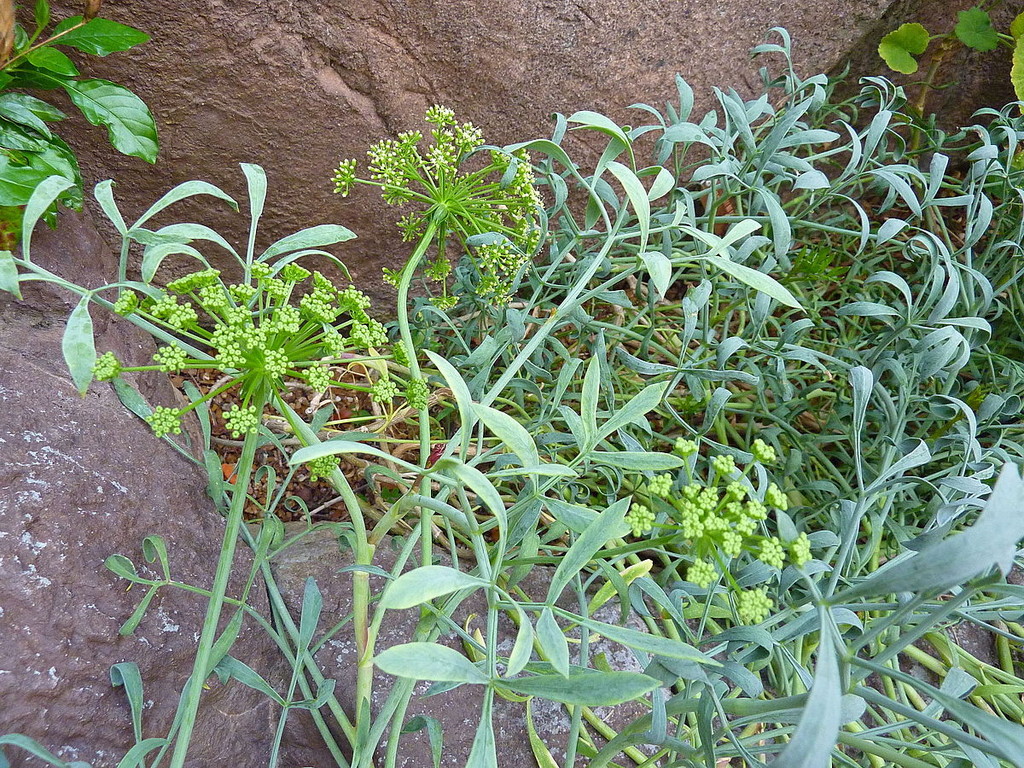
[Credit James Steakley]
The Crithmum maritimum, common to the spontaneous state, has been transplanted in the gardens to try its cultivation in order to collect the tender shoots and leaves to be used in human food, as a condiment preserved in vinegar like capers, or as cooked vegetables. There are many recipes created over the centuries along the Italian coast to use the aromas contained in the leaves to vary the flavor of everyday foods. The English botanist William Turner described it as "Marine Crete", a name with which it was known to his contemporary naturalists, among them John Gerard, who called it "of pleasant scent, delicate to the palate, although of taste that many judge salty" .
The "St. Peter's Grass", also called "Marine Fennel", "Frangisassi" and "Bacciglia" has even found authoritative quotation by William Shakespeare, who in the King Lear warns his contemporaries defining a "terrible job" "The habit of climbing the cliffs to collect it because often halfway, those who search for it, fall down".
Another confirmation of his current food consumption comes from Bromfield who reports that the owner of the Castle of Freshwater, on whose walls the Crithmum maritimum grew with plenty, demanded a heavy tribute to authorize its collection. On the other hand, the commercial exploitation had reached such a spread that many naturalists denounced its progressive disappearance from some riparian zones, caused by the indiscriminate collection made by the local populations.
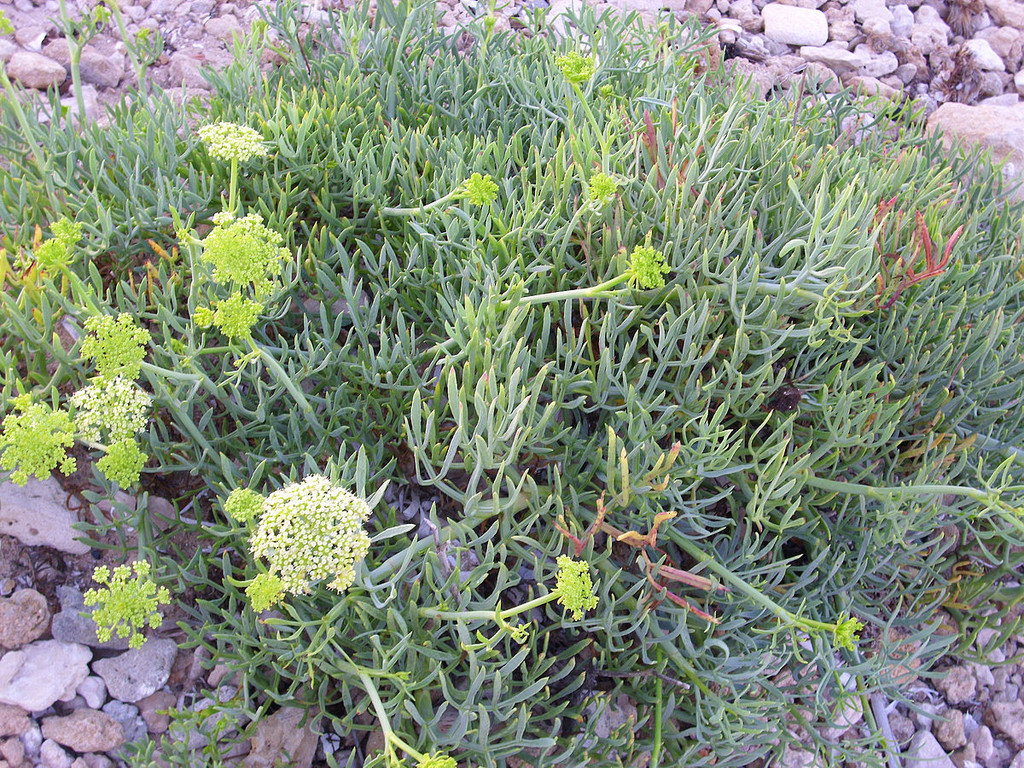
[Credit Javier Martin]
In Roman times Pliny called it, like his fellow citizens, with the name of "Batide" and declared himself certain of his laxative action "Pestled raw you get a good preparation against gout". The description that provides it is as usual impeccable: "The Critmo, is highly praised by Hippocrates. It is one of those wild herbs that are eaten and it is certainly this, that according to Callímaco, is served by the farmer Ecale to Theseus". Its appearance is that of the "Elate da giardino"; the stem is single and one palm high; the spicy seed, is odorous like that of the Libanotis (Cachiris libanotis), rounded: when it is dry, it is shattered. Internally it contains a white core, which some call Cacri. The leaves, fat, whitish like those of Olive, but are thicker and salty; the roots have the thickness of a finger and are in number of 3 or 4. It is born in the stony areas near the sea. You eat raw, or cooked, with cabbage; It has an aromatic and pleasant taste. It is also preserved in brine. It is mainly used for urinary insufficiency, taking its leaves, stem or root in wine.
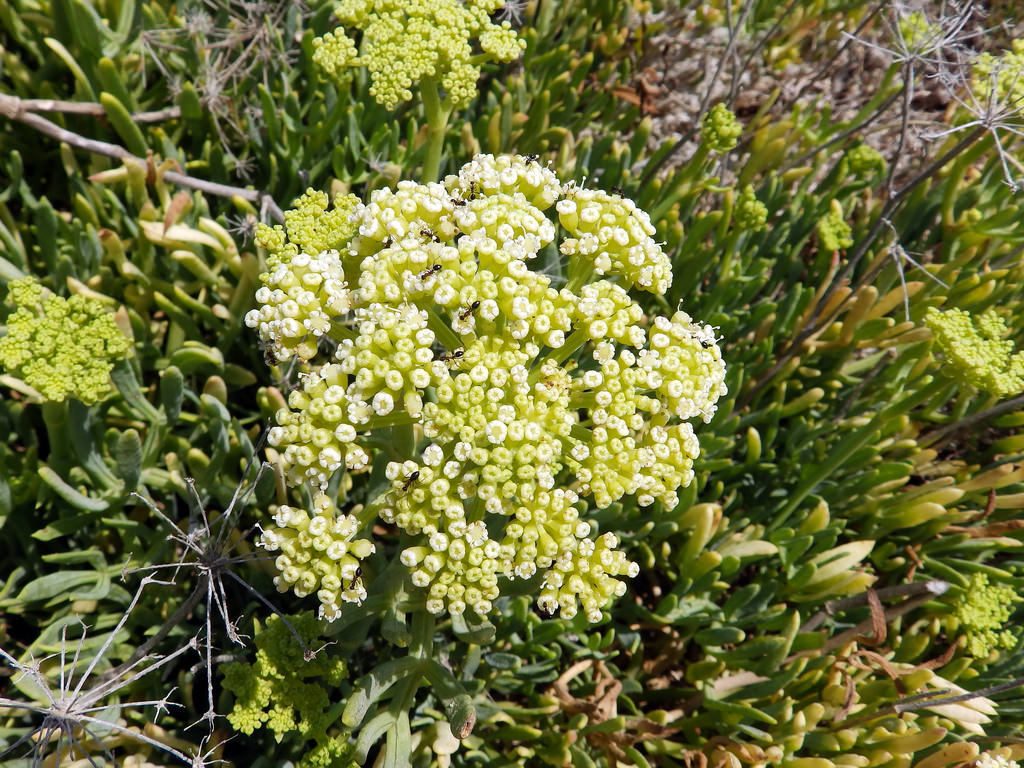
[Credit Flickr]
It also improves the body color, but taken too much in abundance causes flatulence. His decoction dissolves the body, makes urinate and expels the exudates from the kidneys; as potion in wine it is good but it is more effective if you add Dauco (Daucus carota); it is also useful for the spleen. It is taken in potion against snakes ".
The presence in the Critmum maritimum of medicinal principles has been ascertained only in very recent times, even if its belonging to the family of the Umbelliferae, should have made him attribute at least the stimulating, diuretic and aperitif prerogatives of many of his confreres. In fact, his close kinship with a definitely medicinal species such as Fennel, transpires besides the aforementioned national vernacular baptism also from the English "Sea fennel", from the German "Seefenchel". Prof. Guido Rovesti, who has worked extensively in Imperia, considers the Crithmum maritimum a good stomatic and carminative, stimulating the tonicity of the muscles of the stomach, suitable to suppress the formation of intestinal gas and to promote the assimilation of food.
The spicy, slightly salty taste and a scent very similar to that of Fennel make it still appreciate the fleshy leaves, both in salads and in aromatic sauces, cooked in butter, as a garnish for meat dishes or preserved in vinegar.

